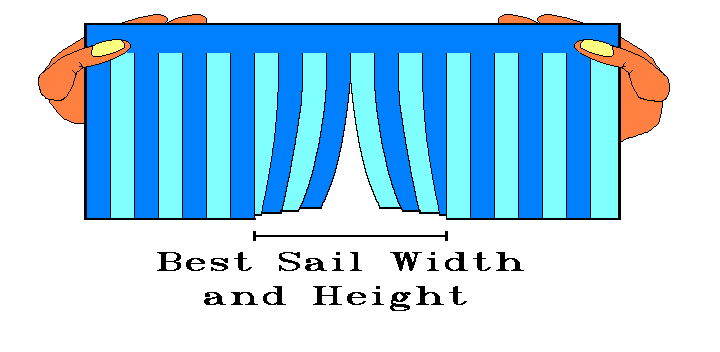
| Raingutter Boat Racing - | Breathing Life Into Your Boat |
There are two properties of your sail that depend on how big it is. These are how much air it can trap and how heavy it is. Your sail's resistance to forward progress due to dragging through the air is usually negligible.
Cloth is heavier than plastic or a shaped film especially if it gets wet. If you coat it with liquid plastic or a fabric spray it will be even heavier. Don't forget about the weight of the supporting structures, masts and booms.
Sails formed from paper and coated with liquid plastic require no supporting structures and so can be the lightest of all.
The larger the sail, the more weight it will have. If you make your sail too small, it will decrease the force generated by blowing. So how do you make the smallest possible sail without making it too small?

The strips that are blown back farther than most of the others represent the width of the sail that is best for your boat. Your sail should not be any taller than this width either. Any more area on your sail will not react as much to the blowing force.
The shape and material of your sail will make the most difference in the aerodynamic drag coefficients, s and e, of your sail. The greater the difference between s and e the better. Concave or pushed in sails tend to trap your breath better and actually reflect some of it backward increasing the pressure difference. Likewise, sails that do not let air through (impenetrable) like paper and paste, plastic or plastic films are best. Blow on a piece of cloth with one hand behind it to feel the air escaping through it.
An impenetrable sail with a spherical impression has a backside drag coefficient (s) of about 1.5 and a front-side drag coefficient (e) of about 0.6. Other shapes (parabolas) are better.
| [Dry Dock] | [Title Page] |
| Raingutter Boat Racing - | Breathing Life Into Your Boat |
| Copyright © 1997, 2000, 2002, 2004 by Michael Lastufka, All rights reserved worldwide. | |